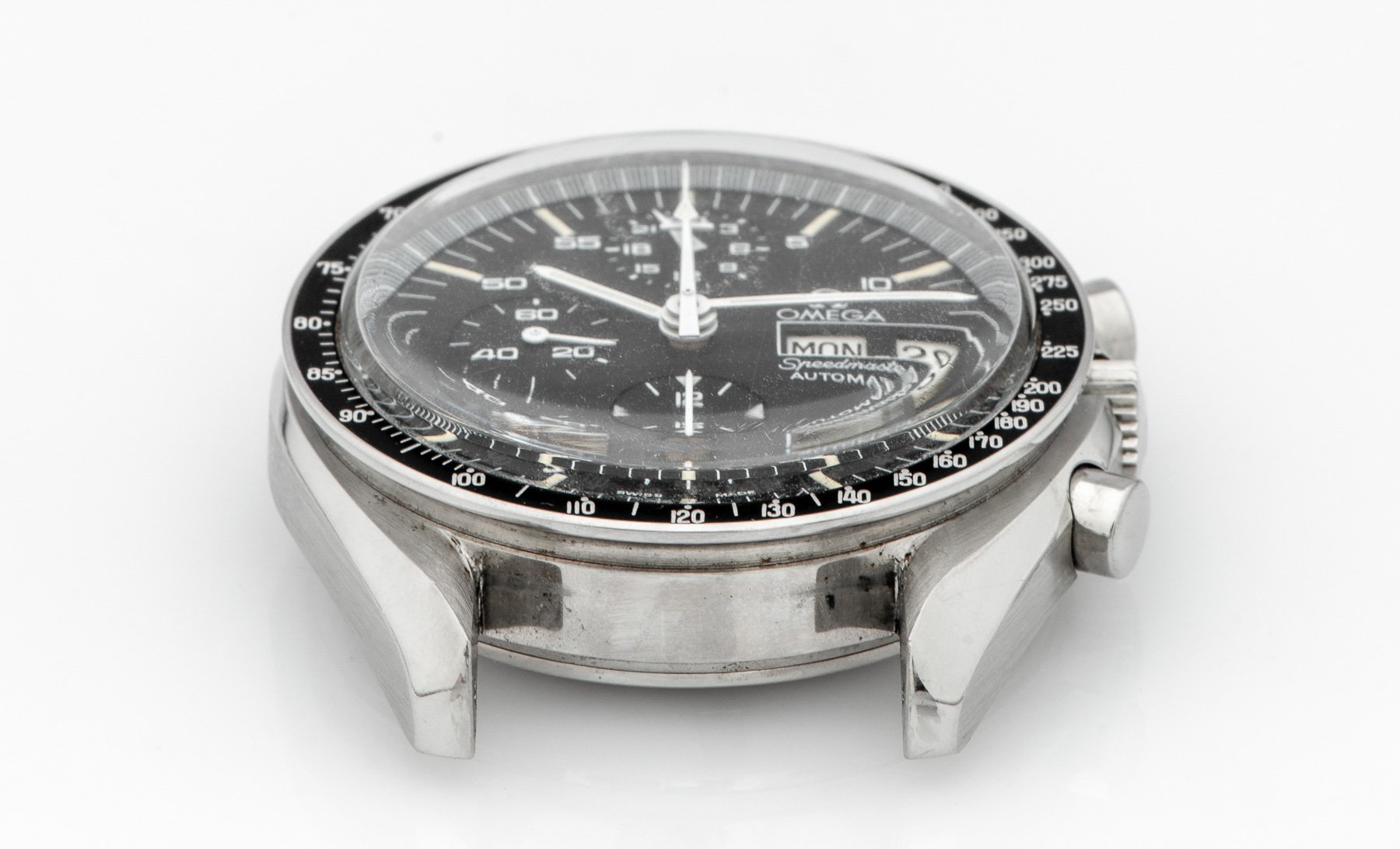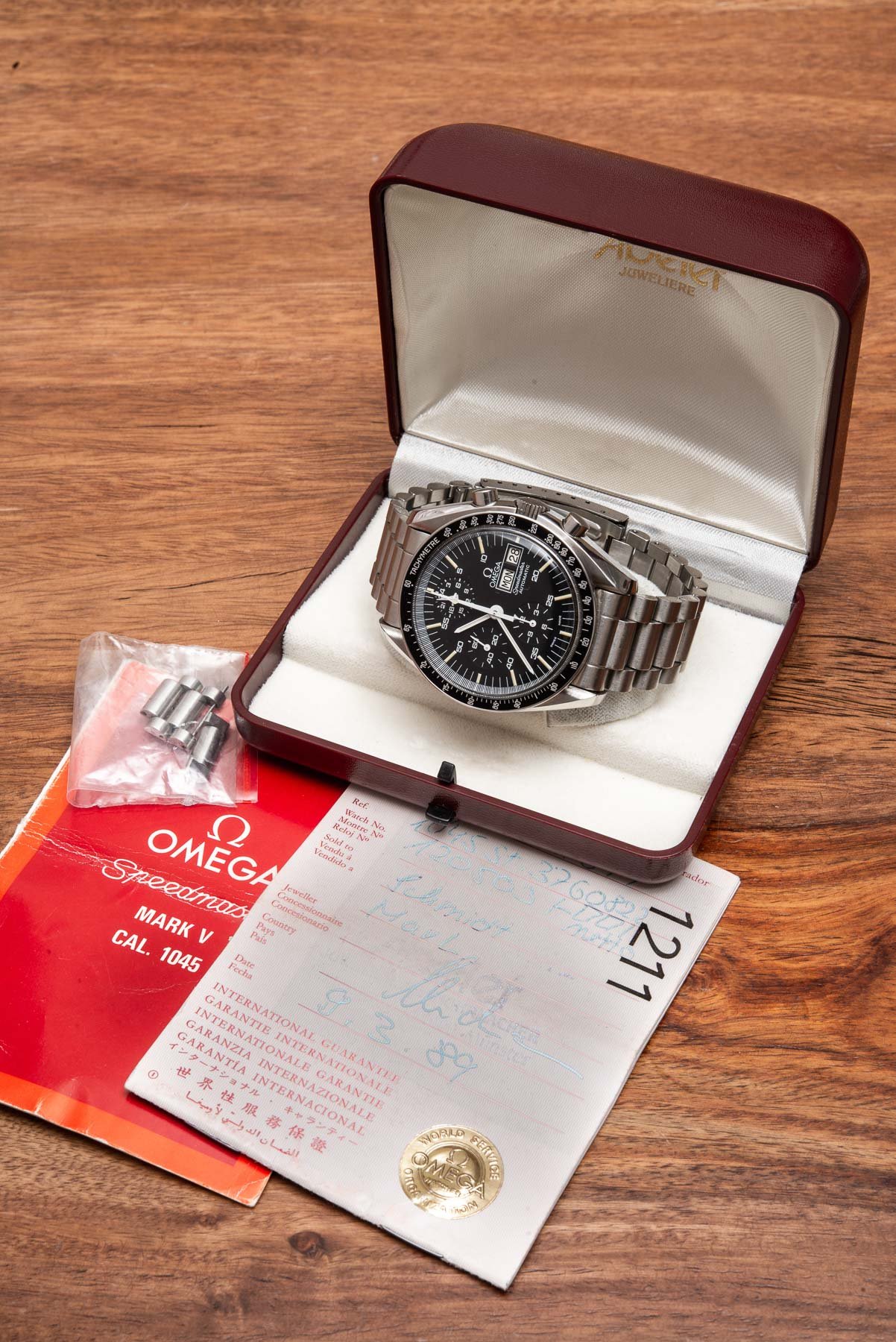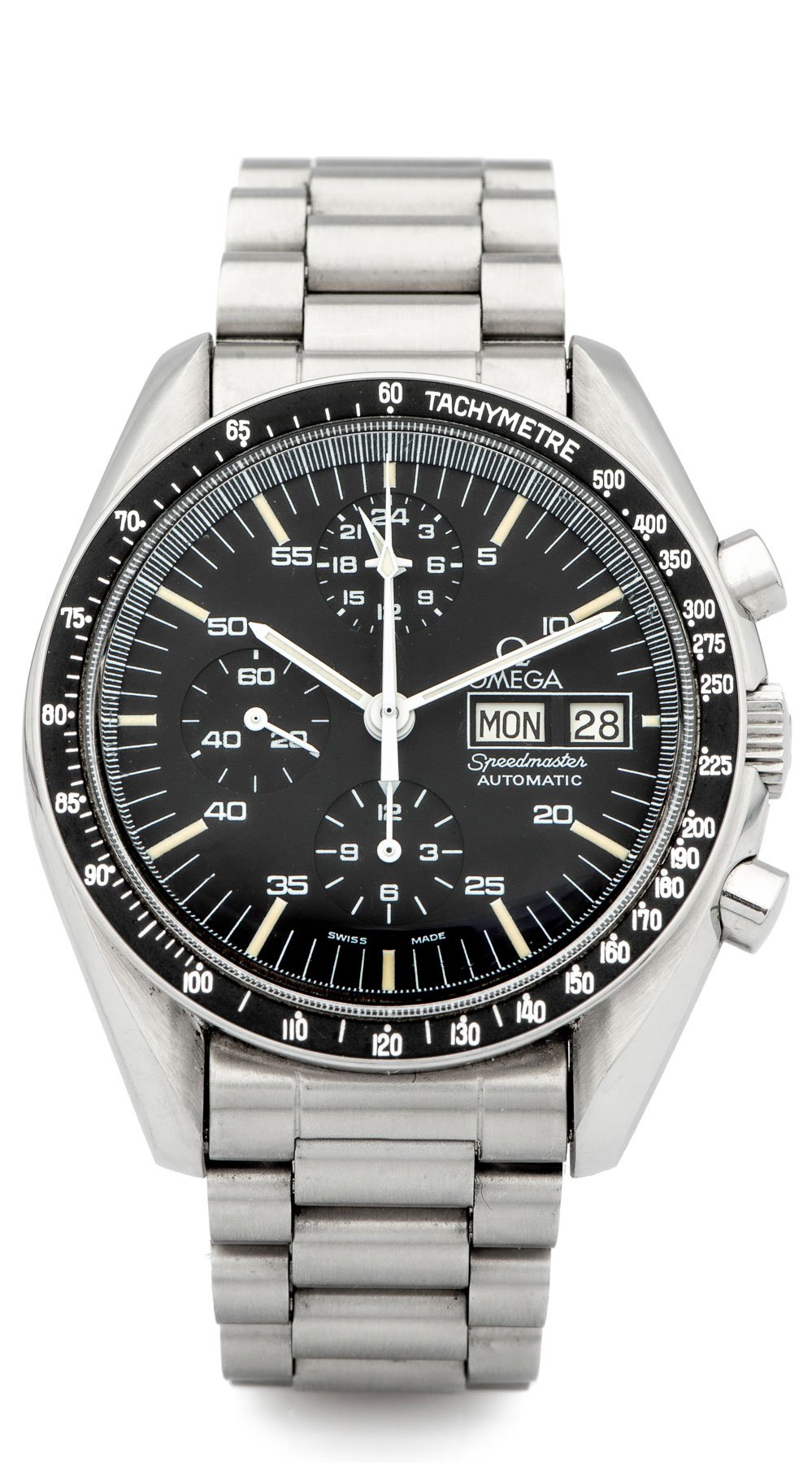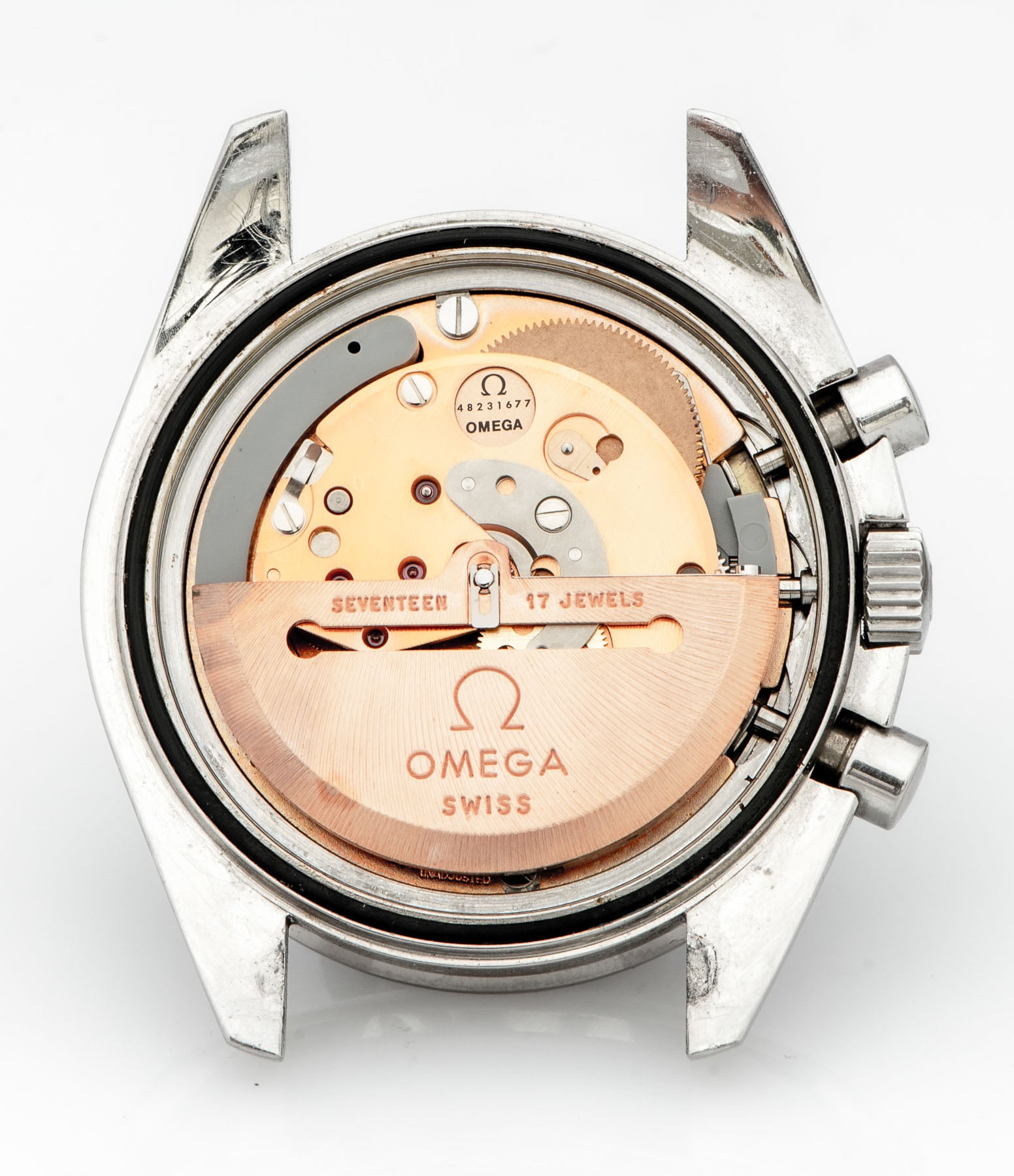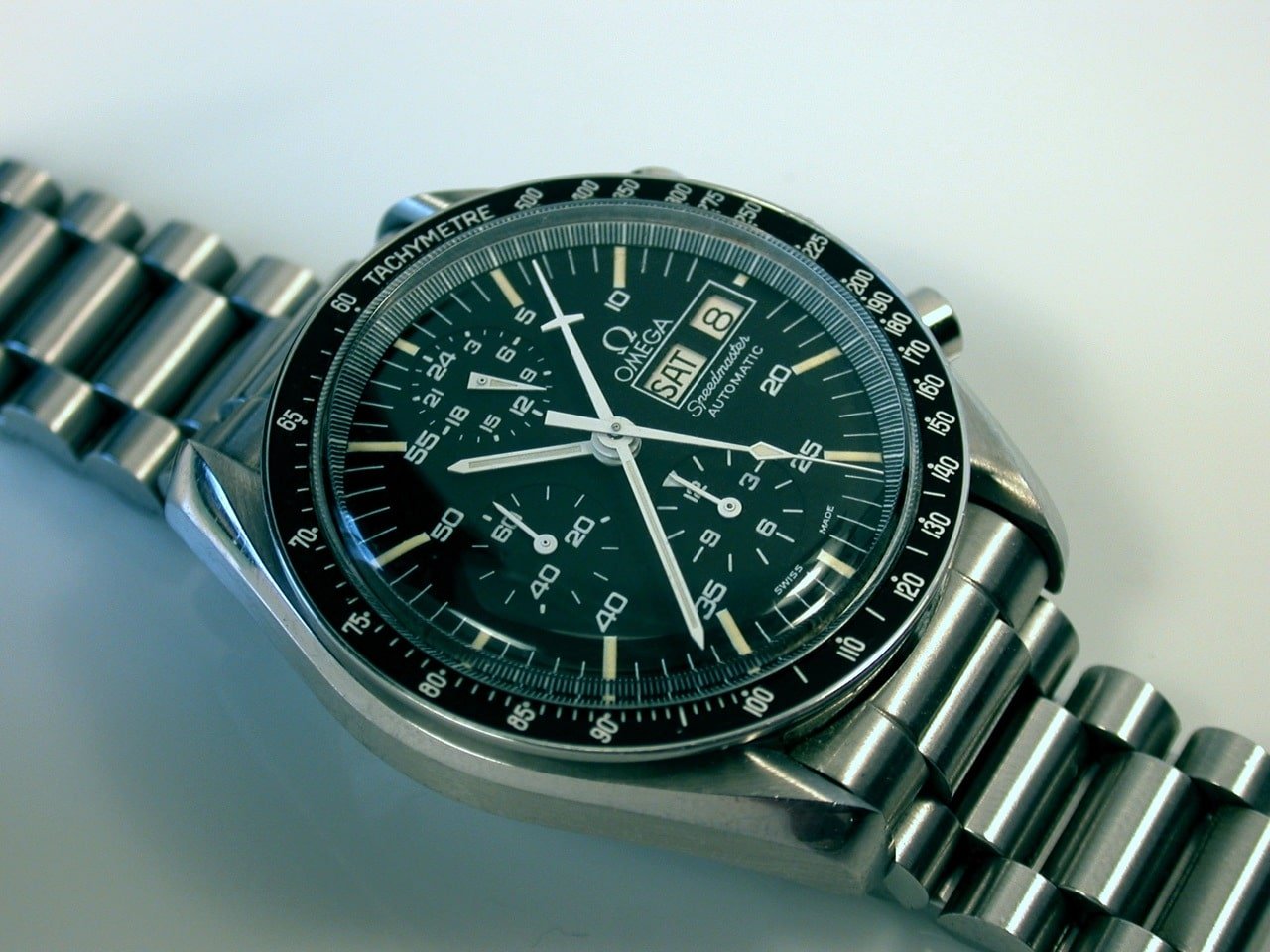The Speedmaster Holy Grail Explained
When Omega introduced their Speedmaster Automatic 376.0822 in 1987, they never guessed it would be nicknamed ‘The Holy Grail’ by Speedmaster collectors and fetch prices between 20.000 and 30.000 Euro.
We wrote an article on the Speedmaster Holy Grail last year, with an explanation of mainly the technicalities of this watch. The production number (believed to be 2000 pieces), production years (1987 and 1988), and how it was initially being delivered (which bezel, dial, hands, bracelet, etc.). If you are looking for that, please read this article, as it covers the extensive research done by the authors of Moonwatch Only as well as the author of OmegaHolyGrail.com.
But what makes the Speedmaster Holy Grail, the Holy Grail? What makes it so unique? Without going to dive into technical details (click the links above for that), this article is about the ‘why’ of this Holy Grail.
Speedmaster Holy Grail
Although some folks might feel that Omega is pushing out too many different models these days, pick a catalog from the 1970s and 1980s, and you will see some proper mayhem there. When it comes to the Speedmaster, a lot was going on, as well. Including a variety of models that were for specific markets (such as Italy and Germany, for example), but also countless variations on the original Speedmaster. Besides a variation on the ‘Moonwatch’ (like the gold editions, bi-color models, moon phase model, Apollo XI edition, country-specific editions for Italy (bi-color), there were also the Mark V (Germany only) and the later Speedmaster Automatic ‘Reduced.’ The Speedmaster Reduced was mainly a smaller version of the Moonwatch, with an automatic movement. This is the short version of explaining the Reduced, but you can find a comparison with the hand-wound Moonwatch in this article here.
Speedmaster Series
The Mark V is an exciting model and is also the introduction to today’s subject, the Speedmaster Holy Grail. The Mark V was the last iteration of the Mark-series. The Mark series started with the famous Mark II (145.014) in 1969, which had the same hand-wound Lémania movement as the regular Moonwatch. Then, in 1972, came the Mark III (176.002), the first Speedmaster to come with a self-winding movement. A year later, the Speedmaster 125 was introduced with the same Lémania movement, but this time, with chronometer certification. The Mark IV (176.0009) was also introduced in 1973 and had once again the same Omega caliber 1040 movement (Lémania 1340). I will skip some of the other variations, but the Mark V (376.0806) was introduced in 1984, with Omega’s caliber 1045 movement. This movement, based on the Lémania 5100, had been used before in a variation on the Mark IV that people refer to as Mark 4.5. Still following?
The Lémania 5100 was praised by many but unfortunately discontinued in 2003. It had been on the market for 30 years, and Omega adopted it as their caliber 1045 from 1974 onwards. It is good to know that the base of the Holy Grail is this very movement that made the inventor of this Speedmaster’s nickname start his search. I am talking about Chuck Maddox, the late and legendary chronograph collector with a particular focus on Omega watches. While his very first Speedmaster was a Mark II he found in some pawnshop; his aim was to add the Speedmaster 376.0822 as his second Speedmaster. He wasn’t able to find one close to home (sourcing through the internet wasn’t as convenient in 1999 as it is today), so he let the one he found for sale in Germany slide and he decided to go for the reference 176.012 Speedmaster, in a Mark IV case and also with the Lémania 5100 based caliber 1045. The Speedmaster Mark 4.5 as we know it today. Only years later, he was able to find a Speedmaster 376.0822. Since the hunt was so strong for this model, he called it ‘The Grail.’ Check the link for his extensive write-up on the topic of searching for one. The Speedmaster Holy Grail became the name for this watch, that he described so well on his website and that he praised so much in his writings on TimeZone and Watchuseek at the time. In recent years, due to research by the titles mentioned above, it came to light how many of these watches were exactly produced (2000 pieces, which is more than Chuck Maddox had assumed) and what you need to look for when searching for one. Over time, many of these watches have been repaired or serviced, and sometimes returned with spare parts that are slightly different from the original parts from 1987/1988.
What makes it The Holy Grail?
One man’s grail doesn’t necessarily mean it is also the grail of others. You could say that Chuck Maddox was one of the first Speedmaster influencers if you don’t mind using a word like that, but I also believe that many people believe that Chuck had an interesting point in his descriptions of the Holy Grail. Many chronograph collectors praised the Lémania 5100 movement, and combined with one of the most important and best-designed chronographs; it ticked a lot of boxes. Where the normal ‘Moonwatch’ had a hand-wound movement that did the bare minimum of what a chronograph movement should do, the Omega caliber 1045 was able to indicate day & date and had a 24-hour scale. A lot of information to have on your mechanical watch, in the case of the Moonwatch. Not the same case, as the Speedmaster Holy Grail case is a bit thicker, but the design was in the same style as the Moonwatch. Add the much-praised (also by me) reference 1450 bracelet, and you have – in theory – the perfect Speedmaster. I think that this combination is more important to the Holy Grail nickname than the fact there were only 2000 made of these watches. Chuck Maddox’s search party for this watch is a great story, and he loved this watch, which also adds some myth to the Speedmaster Holy Grail, of course. As the folks from Moonwatch Only found out, only one (!) Speedmaster 376.0822 was originally delivered to the USA. If Chuck Maddox would have known this in 1999, he probably ordered the one from Germany or Japan (he also found one there in an early stage of his quest) right away and saved himself a few years of searching.
What if
A fascinating quote from Chuck’s website is “I (and other owners) believe that were NASA to conduct a Chronograph contest like the one’s that resulted in the adoption of the moonwatch the watch most likely to topple the moonwatch would be the Grail.” That’s an interesting one, as the Speedmaster Holy Grail definitely has some functional advantages over the normal Moonwatch. But, and this might be a big but, you can question whether astronauts performing an EVA (spacewalk) need to have a 24-hour indicator, day and date on their dial when moving around in space to fix or install some International Space Station equipment. The dial is very legible for a Lémania 5100 powered watch, but compared to the Speedmaster Professional Moonwatch, I would say it isn’t even close to that one. There’s too much going on to be used in critical environments or conditions. Onboard of the ISS or on board of the shuttles that transport astronauts back and forth, they wear watches with more functionality than the added day & date and 24-hour indicator. The Speedmaster X-33 is an excellent example of that, as it has been used since 1998 onwards. So although I can follow Chuck Maddox here as the watch has more to offer than a regular Speedmaster Professional, I think for functionality, the one NASA selected was just fine. Also, you can question whether the Lémania 5100 movement would be as rock-solid as the caliber 321 and caliber 861 (also both Lémania based). According to the Fratello watchmaker, who has been rocking a new pair of Berluti loafers since last week as the fluffy Gucci ones left camel-colored hairs on the black interior of his luxurious and elegant British sportscar, the Lémania 5100 was a good movement for sure. But in terms of robustness, the ETA/Valjoux 7750 tops it. A movement with similar functionality and seemingly the direct competitor of the Lémania 5100 at the time. That said, the 5100s he serviced and repaired in his workshop were quite good aside from the occasionally damaged plate that covers the date, cracked plastic parts (it has plastic parts), and issues with the reverser wheel. Nothing special, he adds.
But, what I could see is that the Speedmaster Holy Grail would have been a more advanced version of the Speedmaster Professional. Omega tried in later years, by adding the automatic Broad Arrow models with F.Piguet caliber and perhaps more recently, with the Dark Side of the Moon and other caliber 9300/9900 powered models. Unfortunately, Omega discontinued the Speedmaster Holy Grail in 1988 again. Good for the collectors who own one, or those who are after owning something special, but it would have been a nice evolution of the existing Moonwatch at the time that could have been produced longer than just two years.
Because it is beautiful
All these ingredients mentioned above of this reference 376.0822 add up to making it the Speedmaster Holy Grail. No doubt. It is a good story: the watch uses a movement that is sought-after by collectors, it was produced for a limited time and in limited quantities, and Chuck’s hunt for one is of great importance, but in the end, I think that this watch is simply beautiful. Better said: Omega achieved to design a watch that uses a Lémania 5100 movement and make it look beautiful. Many of the Lémania 5100 (or Omega caliber 1045) powered watches have a toolwatch look to it. Whether that’s a Mark 4.5, a Sinn EZM1, Sinn 142, Tutima, Orfina, etc. watch, they all have a very utilitarian appearance. The Speedmaster Holy Grail has the same movement and dial layout (of course), but Omega achieved to make it look elegant. The best of both worlds, you could say.
I love the Speedmaster Holy Grail, and I should have bought one when prices were below 10.000 Euro (yes, quite a while ago). In the last few years, they even doubled to 20.000 to 30.000 Euros. Do I feel it is worth that amount? No, I don’t. Even Chuck Maddox complained the prices were reaching $5.000USD back in 2002. But as always, the rules of demand & supply are leading here. The life of a collector isn’t always rational or logic, which is fine, of course. If you are after one, make sure it ticks all the right boxes when it comes to the aesthetics of it.
To me, the Speedmaster Holy Grail is not a grail, but the watch deserves to be called that way.
A big thank you to Davidoff for allowing me to use images of their Speedmaster Holy Grail.

